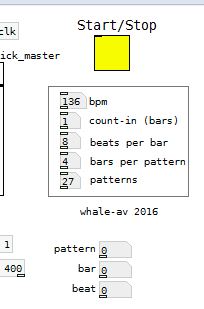Pure Data Patch Arduino


Consists of an Arduino Firmware and a PD-patch. Simple method to realising a clear text ascii data communication between arduino and pure data. Integers and lists between Arduino and Max/Msp or Pure Data. More detailed Max/Msp patch for SimpleMessageSystem. Arduino only sends data to Max from pins.
Hello Sebastien. Yes, Pd does talk directly to the OS, and uses Tcl/Tk (the 'Wish' application) for its GUI. For what happens under the hood start reading here. Look around on that site for answers, and then come back here with any questions. Many very clever people have written (in C) externals that can do more than the basic installation, and in some cases can communicate with other programs and the OS. Pd and Wish communicate through a port, so you might be able to sniff the traffic. But I think they both make direct function calls to the OS, like any other program.
Charles Bukowski Tales Of Ordinary Madness Pdf. You can call Tk functions directly, and you can use [message( boxes to interact with those functions. In extended there was a small window at the bottom of the Pd terminal for sending directly to Tcl, and also an object. [sys_gui] for sending from within a patch. Reference Model Iso 19101. In 046.7 vanilla the prompt was hidden behind the help menu.
And now it seems to be gone. I am sure it can be recovered from the old Tcl code. But to script a command yourself you would have to make a 'plugin' to be run and built into Pd at startup. You will find everything on the Site I have linked to above. For C C++ and Fortran. Time to start contributing some knowledge back to the wonderful world that is the internet; today, a step by step nice and easy tutorial on getting started to building your own MIDI controllers with the arduino. When researching for my ableton controller project, I didn’t find much out there about using firmata on an arduino to send data to software.
The standard approach just seemed to be create the code in the arduino language, upload it to your board and hack one of those MIDI to USB cables as a bodge job way of getting the MIDI out of the arduino. So why firmata and pure data? Well the whole idea of firmata is that you flash it to your arduino, and it throws out serial about whats going on with the arduino inputs and outputs, then you decide how the software treats the readings coming in and going out. Theory out the way, lets build some controllers. You’ll need a few things HARDWARE: An arduino and something to wire into it (for this i’ll be using a pot) A USB cable for your arduino SOFTWARE: Arduino – Pure Data – Firmata – Something to patch your new controller into; like Reason or Ableton Live • SETTING UP FIRMATA AND PURE DATA Install Pure Data and create a folder to store all your patches somewhere. Unzip Firmata and add the files ‘arduino.pd’, ‘arduino-test.pd’ and ‘arduino-help.pd’ to your new Pure Data folder. The ‘arduino.pd’ file is the object that we use in PD for opening up communication with your arduino and routing it to PD.
Lenovo Wireless Device Settings. Awesome, your software is almost set up. • FLASHING FIRMATA TO YOUR ARDUINO Install the latest version of arduino and open it up. Connect your arduino with the USB cable to your laptop (i’m using a macbook for this by the way).
In the example patches, open up “Standard Firmata”, select your board (im using an arduino mega), and your serial port (look for tty.usbserial for use with a USB cable). Then compile and hit the upload button and your arduino is now ready to use firmata and communicate with Pure Data! • WIRING UP A POT are cool, and theres a great arduino tutorial of how to wire one up here: Basically, all you need to know is that there are three pins; your two outer pins govern voltage flow across the pot, meaning one has to be 5V and the other has to be ground. It doesn’t matter which, but your 5v pin is going to be where your pot reads maximum, so convention dictates this should be the right hand pin.